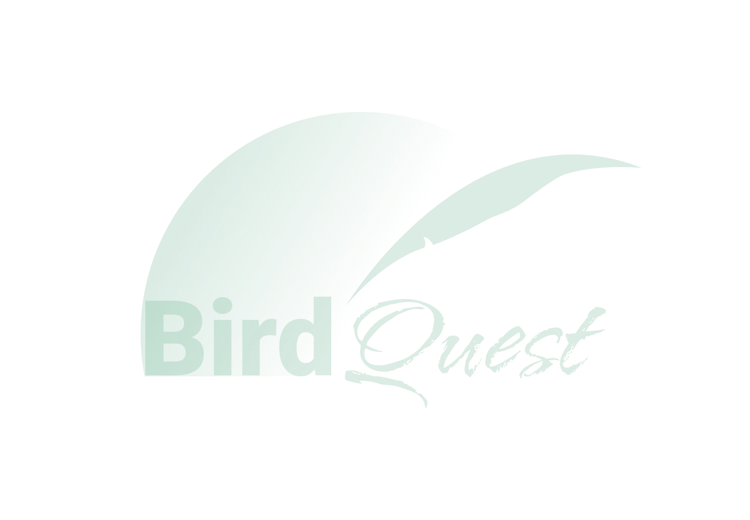COMORO ISLANDS BIRDING TOUR: DETAILED ITINERARY
Comoros: Day 1 The tour begins this afternoon at Dzaoudzi airport in Mayotte. Dzaoudzi is the capital of the two islands that comprise the territory of Mayotte.
(There are regular flights into Dzoudzi from both Nairobi and the French island of Réunion.)
Situated at the northern end of the Mozambique Channel, between Madagascar and Africa, Mayotte (officially known by the title ‘The Departmental Collectivity of Mayotte’) is an Overseas Territory of France consisting of two main islands (Grande-Terre or Mahoré, and Petite-Terre or Pamandzi) and several islets. The territory has been politically separate from the rest of the Comoro Islands since the 1970s.
On arrival, we will travel by ferry across to Grande-Terre and then travel a short distance to our accommodation for a two nights stay.
Along the way, we will stop to see the endemic Mayotte White-eye, which is easy to find, and we will call in at a park where we may well find the endemic Mayotte form of the Comoros (or Red-headed) Fody. Other species we may well encounter include Malagasy Turtle Dove and Cuckoo-roller (the latter, curiously, of the mainland Madagascar form, unlike the situation on Grande Comore and Anjouan).
Comoros: Day 2 Our time on Grande-Terre will largely be spent exploring the slopes of Mont Combani (480m or around 1570ft). Here our time will be devoted to finding the three additional endemics that are restricted to Mayotte, as well as some other more widespread Comoro Islands endemics. We will follow a jeep track up the mountain to search for the endemic Mayotte Drongo and endemic Mayotte Sunbird (both of which should be relatively easy to find) and after dark, we will search for the endemic Mayotte Scops Owl, which is common and easy to see. We should also find two more widespread Comoros endemics; namely Comoros Olive Pigeon and the gorgeous Comoros Blue Pigeon.
With the current trend in splitting, especially of small island forms, we will be on the lookout for all of the endemic taxa throughout the Comoro Islands, and here on Mayotte, these include the Mayotte forms of Frances’s Sparrowhawk and Malagasy Paradise Flycatcher.
Off the coastline, we may turn up both Sooty and Bridled Terns, and Brown Noddy.
Comoros: Day 3 This morning we will travel back to Petite-Terre, spending some time looking around Pamandzi Lagoon. Elegant White-tailed Tropicbirds breed on the island and the lagoon often holds the superb Crab-plover (the sole member of its family) as well as a good selection of other species, including Peregrine Falcon, Greater Crested Tern and the Comoros forms of Striated Heron and Malagasy Swift.
Afterwards, we will take the ferry to the island of Anjouan in the Republic of the Comoros for a two nights stay.
Comoros: Day 7 Anjouan, also known as Ndzuwani or Nzwani, is the easternmost of the three islands which make up the Republic of the Comoros and is home to three single-island endemics. Two of these, Anjouan Sunbird and Anjouan Brush Warbler, are easy to find and even occur in the town. Sadly, the natural vegetation on Anjouan has been devastated and it is difficult to find any decent forest. Much more time will be spent tracking down the endearing Anjouan Scops Owl, which may well prove a little challenging as it seems to require reasonable habitat!
Other species we will be looking for on Anjouan include the scaly Anjouan form of the endemic Comoros Thrush (another likely split), as well as the Comoros form of the Greater Vasa Parrot, a Comoros endemic form of the Cuckoo-roller that is found only on Grand Comoro and the Anjouan forms of Malagasy Paradise Flycatcher, Malagasy White-eye and Comoros Fody. We will also hope to see the scarcer endemic island taxa, including the Anjouan forms of Crested Drongo and the rare Frances’s Sparrowhawk.
Comoros: Day 5 We will take a flight to the island of Mohéli, where we will stay for two nights. According to the flight timing, there will be birding on Anjouan or Mohéli.
Comoros: Day 6 Mohéli, also known as Mwali, is home to four single-island endemic bird species, as well as three others that are shared only with Grande Comore.
During our visit, we will explore the remnant montane forest of the central spine of the island where we should find the uncommon endemic Moheli (or Benson’s) Brush Warbler, the endemic Moheli Bulbul and the endemic Comoros Blue Vanga (the sole representative of this family outside of Madagascar). With just a little luck we will come across the rarely observed Comoros Green Pigeon, which is endemic to the Comoro Islands as a whole. After dark, we will try for the recently described endemic Moheli Scops Owl, which we have an excellent chance of seeing as well as hearing its weird screaming calls.
In addition, we should also find the local forms of Humblot’s Sunbird, Comoros Thrush (the distinctive Mohéli form is probably a good species) and, with luck, the rare Mohéli form of the Comoros Cuckooshrike. Other species we may well encounter include the Mohéli forms of Malagasy Paradise Flycatcher, Malagasy White-eye, Malagasy Green Sunbird and Comoros (or Red-headed) Fody.
Off the coast, we are likely to see Lesser Frigatebirds and attractive Masked Boobies, and we also have a good chance of seeing the endemic temptator form of the Persian (or Arabian) Shearwater.
Comoros: Day 7 We will take a flight to Moroni on the island of Grande Comore, where we will stay for three nights. According to the flight timing, there will be birding on Mohéli or Grand Comore.
Comoros: Days 8-9 Grande Comore (or Grand Comoro), otherwise known as Ngazidja, is the largest and westernmost of the Comoro Islands. During our time on the island, we will explore various areas in the highlands, concentrating on the area around Mount Karthala, which has the largest crater of any of the world’s active volcanoes!
Grand Comoro single island endemics that we should find during our exploration of the island include the critically endangered Grand Comoro Drongo, Grand Comoro Bulbul, the interesting Humblot’s Flycatcher (the sole representative of the genus Humblotia), Grand Comoro Brush Warbler, Kirk’s White-eye and the iridescent Grand Comoro Green Sunbird (now sometimes split from Malagasy Green Sunbird).
In addition, on the upper slopes of Mount Karthala, we will search for the endemic Karthala (or Grand Comoro) Scops Owl and the endemic Karthala White-eye, both of which we should find.
We will also see a number of endemics shared between islands, including Comoros Olive Pigeon, the attractive Comoros Blue Pigeon, Comoros Black Parrot (of the endemic Grand Comoro form), Comoros Cuckooshrike (also of the endemic Grand Comoro subspecies), Comoros Thrush (a species which surely merits a three-way split as the individual island forms are distinctive), the attractive Humblot’s Sunbird and the Grand Comoro form of the Comoros (or Red-headed) Fody.
In addition, we will look out for the Grand Comoro forms of Frances’s Sparrowhawk, Malagasy Spinetail, Malagasy Paradise Flycatcher and African Stonechat (the very isolated montane form here is a likely future split as Grand Comoro Stonechat). Malagasy Harrier is surprisingly common on the island, and around the coast, we should find the Comoros endemic subspecies of Striated Heron and Malagasy Kingfisher.
The Comoro Islands are also home to a number of introduced species such as Ring-necked (or Cape Turtle) and Tambourine Doves, Grey-headed Lovebird, Bronze Mannikin and House Sparrow.
Comoros: Day 10 After some final birding on Grande Comore, our tour ends around midday at Moroni airport.
(There are daily flights from Moroni to Nairobi.)





































